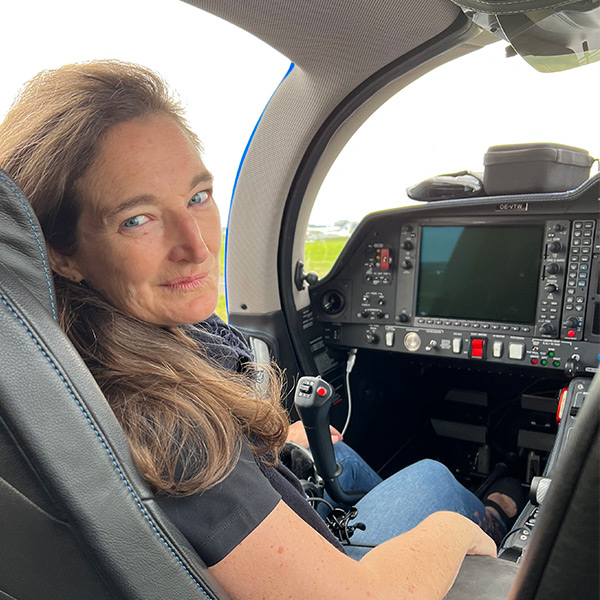The receiver is built on the same solid foundation that makes up most of the Sporty's transceiver line, with a detachable antenna, a large display screen, and a light-up keypad. However, you can now dial in up to five priority aviation frequencies that the radio scans while you listen to an AM or FM station. When a transmission on a priority frequency is detected, that frequency pops up on the display and the radio suppresses the AM or FM broadcast so that you can hear the transmission on the aviation frequency. When the transmission ends, the radio returns to the previous broadcast station.
We tried the SP-125 at our headquarters in Frederick, Maryland, and found that the feature worked well. We could tune in the local country station as well as the unicom frequency at Frederick to listen for traffic in the pattern. The frequency stored in the first priority memory preselect takes precedence over the four other memory stations, allowing you to prioritize the transmissions that you receive - and if you prefer the receiver can simply scan your five preselected aviation frequencies, while prioritizing the first memory frequency.
Audio quality is fine for the size of the speaker; an external speaker jack is provided. The SP-125 runs on four AA batteries, which are included.
Price: $159.50. For more information: 800/776-7897; www.sportys.com
Airport Signs on PDA
Even if you normally fly from a grass strip in the middle of nowhere, you still need to understand runway markings. And, there has been some new equipment added recently to combat runway incursions that you must know how to interpret before your next trip to a towered or larger airport - and certainly before you take your next checkride.
Airport Signs, by Production Software, is a simple program for personal digital assistants (PDAs) that helps you to review 30 different runway markings, lights, and signs. References to the appropriate section of the Aeronautical Information Manual and newly implemented Surface Movement Guidance and Control System standards are included for further study.
The Airport Signs program requires a Palm-based device running OS 3.5 or higher, and it works on both color and black-and-white PDAs. Production Software also offers other programs for purchase or as freeware that allow you to look up airport identifiers, airline codes, and commonly used pilot and aviation terminology.
Price: $6.95. For more information: www.pspda.com; [email protected]
Vertex Standard VXA-700 transceiver
The latest handheld transceiver from Vertex Standard/Yaesu packs a lot of functionality in a small case.
The VXA-700 Spirit can access aviation VHF, FM, and amateur radio bands, recall 190 frequencies from its memory, and receive NOAA weather channels (in the U.S. version). We tested the transceiver's five-watt transmit power and found we could consistently establish clear communications at a 10-nm distance. A one-touch emergency frequency button takes you to 121.5 instantly, though accessing VOR functions requires reading the user's manual.
Learning the best way to access basic functions, such as tuning in a frequency, also takes some instruction. Punching in a frequency requires you to be in the correct mode, with the band noted in finer print, which was initially confusing to our testers. However, once you understand the scheme (aviation frequencies are accessed on the AM band and are not identified on screen as aviation or VHF), it becomes easier to operate. We found it easier to dial in frequencies as opposed to punching in their numbers on the keypad - a limitation, as it can take a little longer to do so. However, the VXA-700 makes a great tool for listening to your local approach or tower frequency to become more com-savvy.
The die-cast magnesium case is sleek and submersible to three feet for up to 30 minutes. It also features a waistband clip that allows the user to flip the transceiver up and out of the clip quickly. A microphone jack and DC power jack are also included, as is a lithium-ion battery.
Price: about $419 at dealers nationwide. For more information: 714/827-7600; www.electroblast.com



